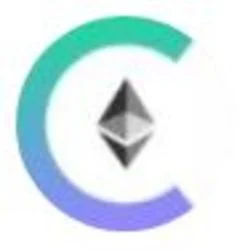5 Most Important Trends in DeFi: Unpacking Token 2049

The following is a guest post from Srikumar Misra, founder at aarnâ protocol.
A quintet of interwoven vectors: DeFi, stablecoins, AI, regulation, and liquidity are large themes bouncing around, posing barriers and deep opportunities. The build energy continues to be phenomenal. It feels like Token 2025 will vastly differ from the muted, bated-breath anticipation the crypto community has had in the last two years.
At the outset, I must confess that conferences are not my thing! I’m an INTJ (that’s Myer’s Briggs Type Indicators – take a look if you haven’t, old world interesting psychological science), and I need my space & time, and doing 12 hours of endless catch-ups, meetings, networking, and listening to the same speakers say mostly the same things, well, that can be taxing.
But the vibe and the energy at Token 2049 this year kept even the INTJ in me going! It doesn’t seem like there’s a big stagnation in crypto; it didn’t seem like DeFi TVL was down: the conviction & the action of the believers, the stayers, and the builders were DeFi’ing. You know that some people like you have their heads down and building away, getting ready to strike back to build a new participative creator & financial system.
So, here’s my top five takeaways from what’s brewing:
1. DeFi is vital for crypto
DeFi is a cornerstone of the crypto, and for any L1 or L2 to thrive in any crypto sector verticals like gaming or NFTs, the DeFi ecosystem on the chains has to be vibrant. DeFi is the financial pipeline of crypto. While tokenization, fractionalization, and RWAs on-chain become larger emergent themes, DeFi in its original form must exist yet evolve because DeFi in its current form will not be able to onboard the next 100 million users.
It needs to be less complex (abstraction), less fragmented (aggregation), and UX-focused. Building next-generation DeFi is an existential essentiality for L1s, L2s, and protocols to bear as a framework.
2. Stablecoins will evolve
To date, stablecoins have been the most widely accepted use case for DeFi. They serve multiple objectives in a user’s digital asset life cycle, from on-ramping to holding liquidity without market volatility exposure to operating cross-chain with arguably easier bridging
However, stablecoins are not interest-bearing and, for the most part, are not just USD-denominated but also fully USD-backed. And these two dimensions will change. There will be stablecoins that will emerge, which could still be USD-denominated but backed by crypto assets (we’re not talking algo stables here) and be interest-bearing. This thought is not novel, but sometimes ideas are ahead of time, and now it is beginning to feel that time is maturing for this.
3. AI + crypto is real
The AI narrative, as is the buzz around the convergence of AI and crypto, is overused everywhere. From automated agents natively interacting with smart contracts to AI-managed asset management to distributed storage & computation run on blockchains via protocols, large-scale AI models to be operated and be sanction resistant and not bear concentrated exposure to centralized storage & computation.
It’s particularly of deep interest to me and the validation of the work we’ve been doing building aarnâ AI at the intersection of DeFi and AI for autonomous asset management for over eighteen months now.
4. Regulation beyond the US
This of course, is one of the largest overhangs over the crypto world, and it’s not just the SEC and its vagaries in the US, but almost all countries with their blow hot blow cold crypto, and more, DeFi relationship. I briefly chatted with Larry Cermak, the tall man from The Block. It was the obvious line of discussion to dive into how DeFi protocol founders are being noticed now and then in the US, and it’s just compelling all the legit players to be deeply concerned and explore moving out.
We need progressive regulation to come by – and look at crypto as crypto, i.e., a tokenized economy, not as a currency. DeFi regulation needs to be led by other countries, not left to be led by the US.
5. Liquidity remains stifling across all stages
Finally, the big concern is around liquidity and velocity. Liquidity is under challenge. Legitimate market makers are struggling to access capital. With volumes being down, CEXs are under pressure. Though top DEXs like Uniswap started gaining significant volume traction earlier in the year, the continued sideways movement of markets is sucking out active liquidity.
Larger market makers who have conventionally only focused on CEx’s are probably struggling to grasp DeFi liquidity provision because it’s more layered (though directly on-chain) and are not helping the cause. And VCs? In freeze mode, not crouching to break free from the herd, but just huddling down. That chokes newer DeFi projects from taking to market higher-order innovation, which could trigger the loop of newer user acquisition – buzz – liquidity.
Daunting themes, each one of them, and prolific opportunities, too. There are deep thinkers in this space and brash doers, too. Token 2025 will be very different. You can see it, hear it, and feel it.



































































































